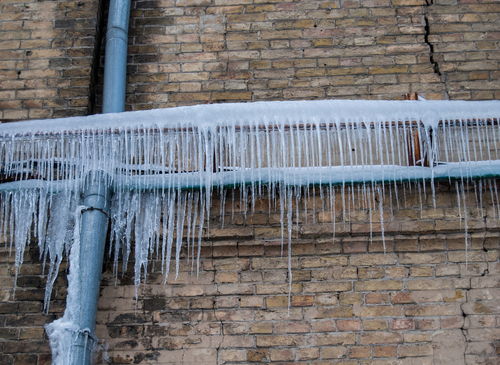Just how do you feel when it comes to 6 Ways to Prevent Frozen Pipes?

Cold weather can ruin your plumbing, specifically by freezing pipes. Below's how to avoid it from taking place and what to do if it does.
Introduction
As temperatures decline, the threat of icy pipes rises, possibly resulting in pricey repair work and water damage. Understanding how to prevent icy pipelines is vital for property owners in chilly climates.
Recognizing Icy Pipes
What causes pipes to ice up?
Pipelines ice up when revealed to temperature levels listed below 32 ° F (0 ° C) for extended periods. As water inside the pipes freezes, it expands, putting pressure on the pipe walls and possibly creating them to rupture.
Dangers and damages
Frozen pipes can lead to water supply disruptions, home damages, and expensive repairs. Ruptured pipelines can flood homes and create extensive architectural damages.
Signs of Frozen Water Lines
Recognizing icy pipes early can avoid them from rupturing.
Exactly how to determine frozen pipes
Search for decreased water flow from taps, unusual odors or sounds from pipelines, and noticeable frost on subjected pipes.
Prevention Tips
Shielding at risk pipelines
Wrap pipelines in insulation sleeves or make use of warm tape to secure them from freezing temperatures. Focus on pipelines in unheated or outside areas of the home.
Home heating techniques
Maintain interior areas effectively heated up, specifically locations with pipes. Open cabinet doors to allow cozy air to distribute around pipelines under sinks.
Safeguarding Exterior Pipes
Yard tubes and exterior taps
Separate and drain pipes yard hose pipes before winter season. Install frost-proof faucets or cover exterior taps with protected caps.
What to Do If Your Pipes Freeze
Immediate activities to take
If you presume frozen pipelines, maintain faucets open to relieve stress as the ice melts. Use a hairdryer or towels taken in hot water to thaw pipelines slowly.
Long-Term Solutions
Architectural changes
Take into consideration rerouting pipes far from exterior wall surfaces or unheated areas. Add added insulation to attics, cellars, and crawl spaces.
Upgrading insulation
Invest in high-grade insulation for pipes, attic rooms, and walls. Correct insulation aids keep regular temperature levels and minimizes the danger of frozen pipelines.
Final thought
Avoiding frozen pipelines needs positive measures and fast actions. By comprehending the causes, indicators, and safety nets, property owners can protect their plumbing throughout cold weather.
5 Ways to Prevent Frozen Pipes
Drain Outdoor Faucets and Disconnect Hoses
First, close the shut-off valve that controls the flow of water in the pipe to your outdoor faucet. Then, head outside to disconnect and drain your hose and open the outdoor faucet to allow the water to completely drain out of the line. Turn off the faucet when done. Finally, head back to the shut-off valve and drain the remaining water inside the pipe into a bucket or container. Additionally, if you have a home irrigation system, you should consider hiring an expert to clear the system of water each year.
Insulate Pipes
One of the best and most cost-effective methods for preventing frozen water pipes is to wrap your pipes with insulation. This is especially important for areas in your home that aren’t exposed to heat, such as an attic. We suggest using foam sleeves, which can typically be found at your local hardware store.
Keep Heat Running at 65
Your pipes are located inside your walls, and the temperature there is much colder than the rest of the house. To prevent your pipes from freezing, The Insurance Information Institute suggests that you keep your home heated to at least 65 degrees, even when traveling. You may want to invest in smart devices that can keep an eye on the temperature in your home while you’re away.
Leave Water Dripping
Moving water — even a small trickle — can prevent ice from forming inside your pipes. When freezing temps are imminent, start a drip of water from all faucets that serve exposed pipes. Leaving a few faucets running will also help relieve pressure inside the pipes and help prevent a rupture if the water inside freezes.
Open Cupboard Doors
Warm your kitchen and bathroom pipes by opening cupboards and vanities. You should also leave your interior doors ajar to help warm air circulate evenly throughout your home.

I hope you enjoyed reading our section on Prevent Frozen Pipes . Thanks a ton for finding the time to read our post. Do you know about another person who is very much interested in the topic? Please feel free to share it. Bless you for your time. Please come visit our website back soon.
Further Details